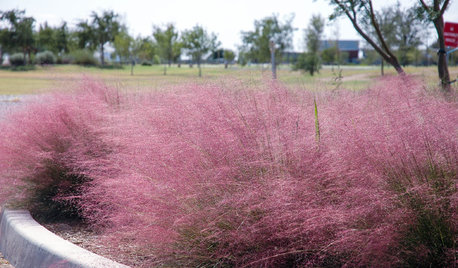Willow as a rooting stimulus?
mantorvillain
17 years ago
Related Stories

ARCHITECTURERoots of Style: Midcentury Modern Design
Midcentury modern still charms with its linear forms and low-sloping roofs. Appreciate it now — such simplicity can be hard to replicate
Full Story
ARCHITECTURERoots of Style: The Eclectic American Foursquare
The turn-of-the-20th-century style transitioned U.S. residential architecture from the Victorian era to the modern age
Full Story
HOUZZ TOURSMy Houzz: European Heritage Animates an Illinois Home
An art-loving family pays tribute to their Lithuanian roots with one-of-a-kind traditional folk pieces and hand-crafted collectibles
Full Story
FALL GARDENING6 Trees You'll Fall For
Don’t put down that spade! Autumn is the perfect time for planting these trees
Full Story
NATIVE PLANTS10 Top Plants Native to the Desert Southwest
Get a thriving garden despite unforgiving conditions with these tough, unthirsty, sun-loving beauties
Full Story
GARDENING GUIDESCelebrate Eastern Oaks for Wildlife, Longevity and Seasonal Interest
There might not be a more important tree to have in your eastern U.S. landscape — if you can fit one in
Full Story
DECORATING GUIDESSo Your Style Is: Traditional
Smitten with classic home design? Use this primer to bring the best of the traditional look to your house
Full Story
HOUSEPLANTSHow to Force Amaryllis Bulbs Indoors
Enjoy vibrant red blossoms even as gardens turn snowy white, by teaching this hardy repeat performer to ignore the calendar
Full Story
GARDENING GUIDESWhen and How to Plant a Tree, and Why You Should
Trees add beauty while benefiting the environment. Learn the right way to plant one
Full Story
GARDENING AND LANDSCAPINGGrow a Lush Privacy Screen
No need to wait forever for patio privacy the green way. These 10 ideas will get your screening up and running in no time
Full Story






chena
kayjones
Related Professionals
Redondo Beach Landscape Architects & Landscape Designers · Lees Summit Landscape Contractors · Mesa Landscape Contractors · Northbridge Landscape Contractors · Paramount Landscape Contractors · San Carlos Park Landscape Contractors · Vadnais Heights Landscape Contractors · San Antonio Siding & Exteriors · Burlington Roofing & Gutters · Fruitville Roofing & Gutters · Winnetka Roofing & Gutters · Brookfield Decks, Patios & Outdoor Enclosures · Inwood Decks, Patios & Outdoor Enclosures · Paradise Valley Decks, Patios & Outdoor Enclosures · Port Saint Lucie Decks, Patios & Outdoor Enclosureskaryn1
msbatt
karyn1
msbatt
karyn1
mantorvillainOriginal Author
isis11059_aol_com
janlynn